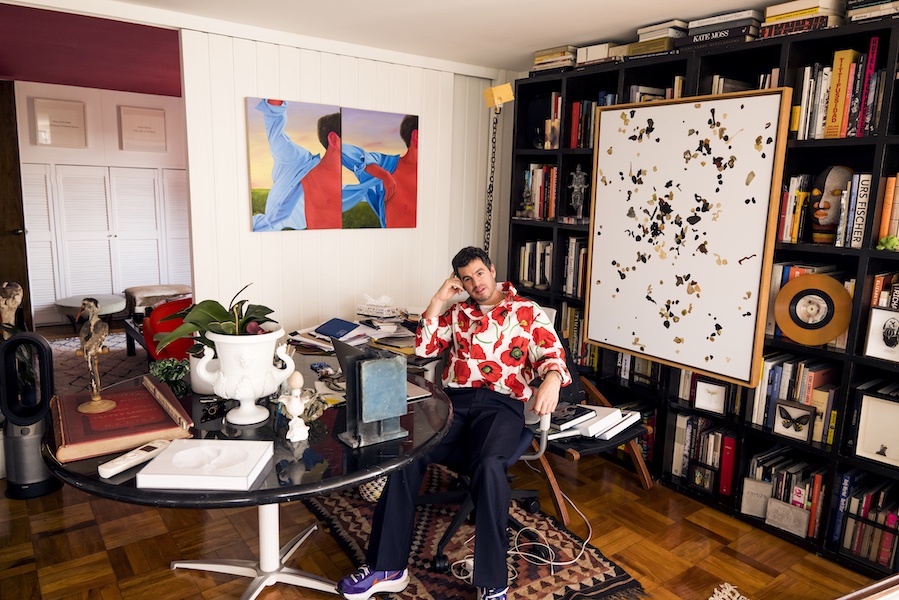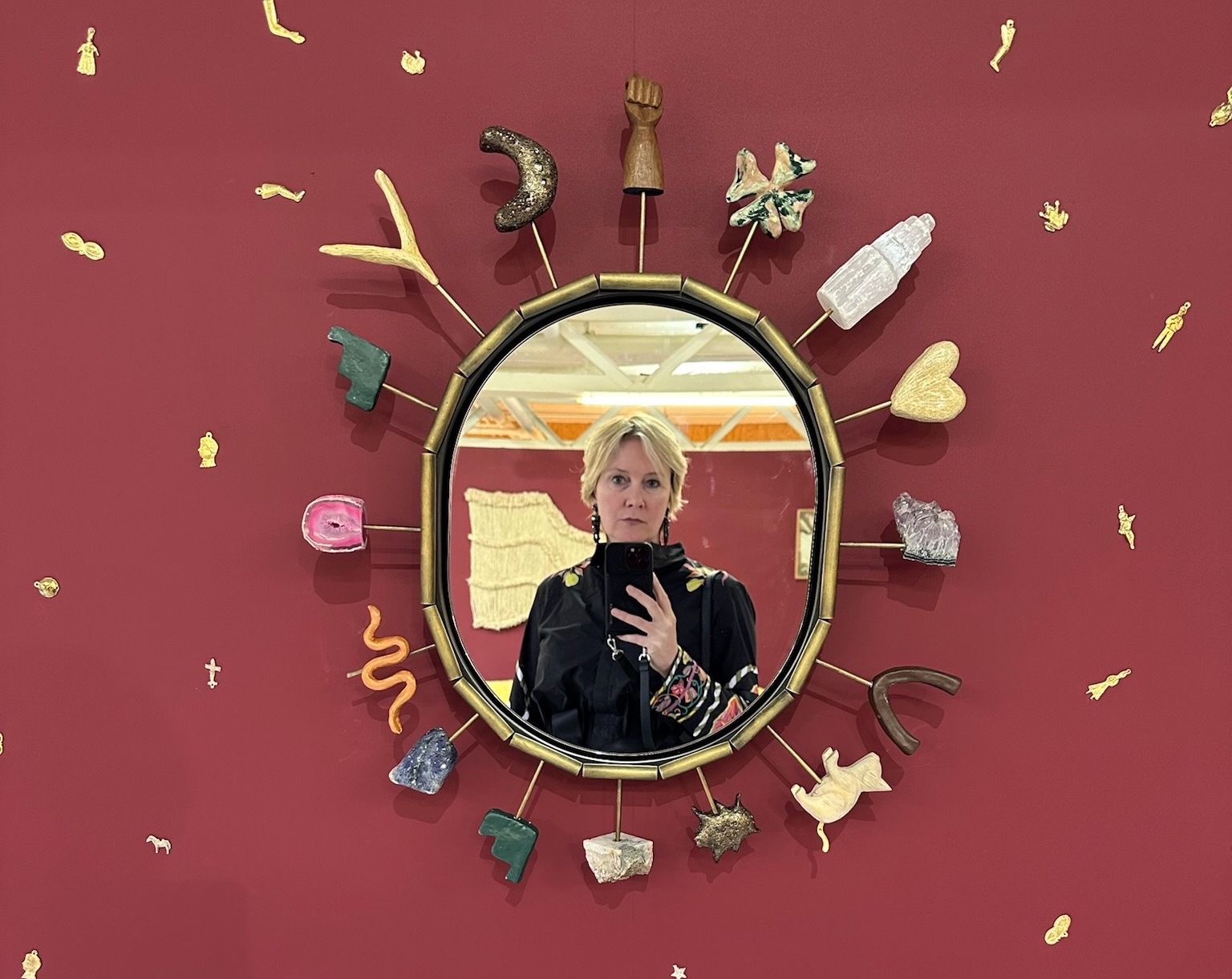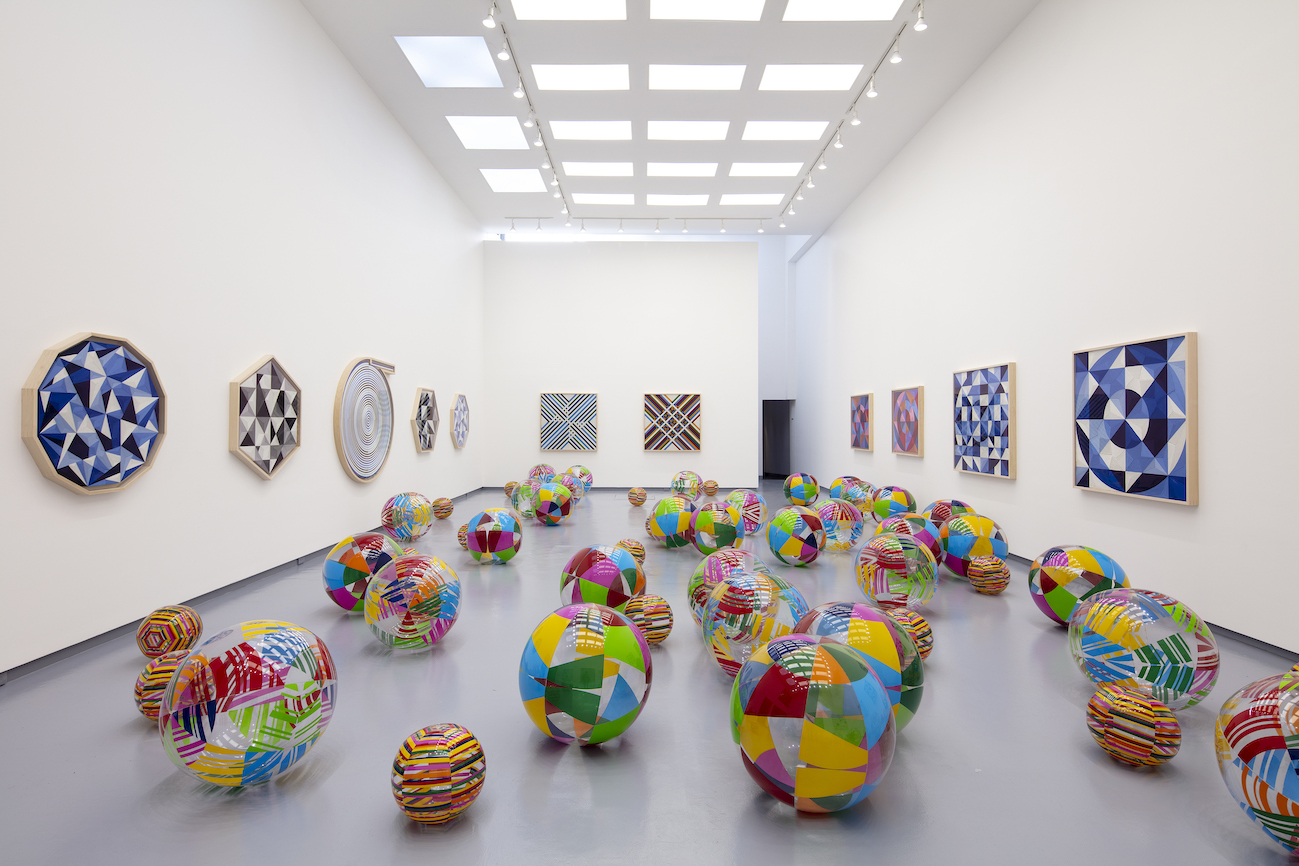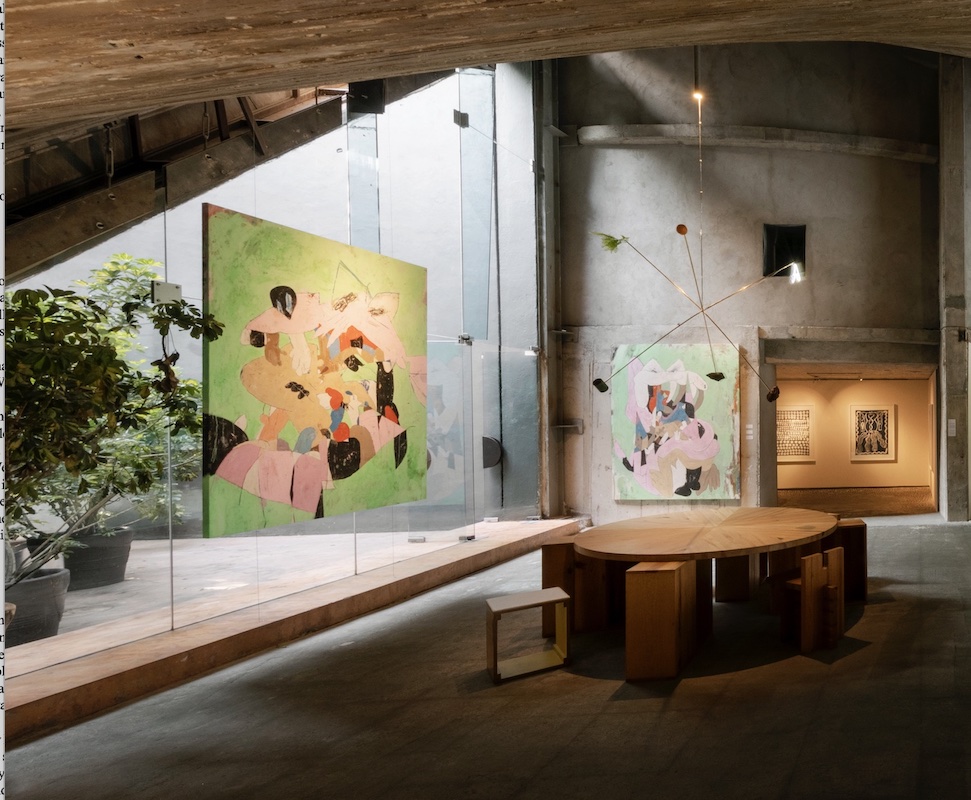Championing Latin American Artists
Rodrigo Peñafiel first fell in love with art while at a friend’s house during his last year of high school in Mexico City. There, the visual drama of Surrealist painting in the work of Leonora Carrington and Remedios Varo popped from the pages of a book. After graduation, a trip to Europe proved formative to his early patronage, where he visited museums like the Centre Pompidou, the Uffizi Gallery, and the Prado Museum.
Today, Peñafiel is a businessman, philanthropist, and art collector who has amassed an impressive collection over the past two decades. After he acquired his first piece, a lithograph by Salvador Dalí, he found works by Louise Bourgeois, John Chamberlain, George Condo, Louise Nevelson, and Gabriel Orozco. His eye for art is open everywhere, including museums, galleries, and fairs, and auctions. His support for art spans various industries, too, as he sits on the board of Museo Tamayo and is a partner of Casa Dragones.
Most recently, it has taken shape in the company Ediciones Marea. Established in 2020, the business is dedicated to producing numbered editions to make art more financially accessible, and collaboratively making pieces with the contemporary artists themselves. So far, Ediciones Marea has collaborated with Pedro Reyes, Mario García Torres, Jose Dávila, Dr. Lakra, Pia Camil, Miguel Calderón, and SUPERFLEX, among others. During Mexico City art week in February, the company partnered with LagoAlgo, the new art space in the Chapultepec Forest from the gallery OMR, to showcase its entire catalog alongside its latest pieces by SUPERFLEX, Gabriel Rico, Abraham Cruzvillegas, Calderón, and Luis Ortiz Monasterio. Curated by Jérôme Sans and OMR’s Cristobal Riestra, the pop-up presentation expands upon Peñafiel’s mission of making art collecting accessible, as well as shining a light on Latin American artists.
To hear how his love for art has evolved and expanded to new heights, Whitewall spoke with Peñafiel.
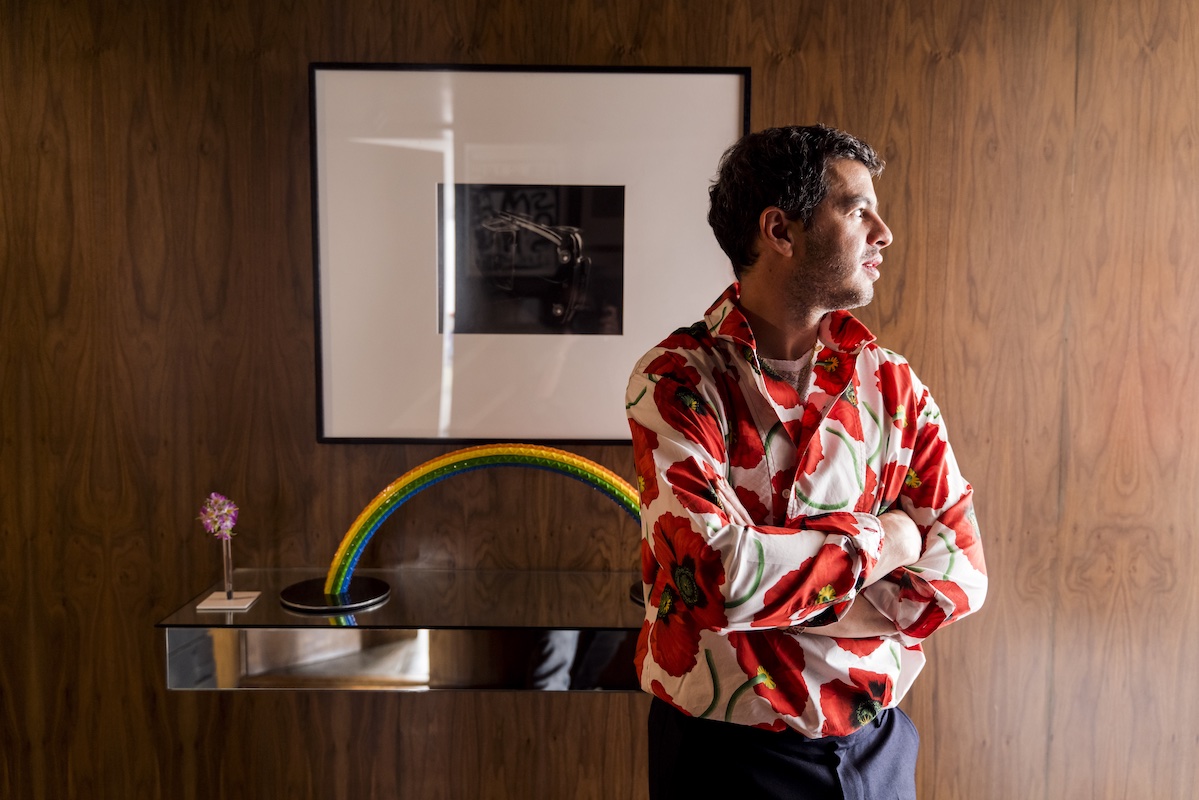
Works by Christopher Williams, Pia Camil, and Dan Colen; photo by Tigree, courtesy of the artists and Rodrigo Peñafiel.
WHITEWALL: After you fell in love with art in high school, how did your interest in the field expand?
RODRIGO PEÑAFIEL: In Mexico, when you finish university, you have to devote hours to something for the community. You could choose, and I chose to work in a museum. A fantastic museum. At that time, it was owned by a Televisa called Centro Cultural. Basically, it was a contemporary art center, and they had a lot of money because they were a TV company. They had the best exhibits. I stayed about a year and a half, giving tours around contemporary art in Mexico and every exhibit that was there. From then on, I loved going to art exhibits.
Later, I started working at [Jose] Cuervo, and one of their brand directors mentioned I needed to combine art and passion. That was perfect for me because I could do a job that I liked, which was marketing and PR, and I could sponsor exhibits at the museums of contemporary friends that I knew—artists that were making art in Mexico. That’s basically where I met gallerists, artists, and everyone around Mexico. From then on, I started collecting their art because I knew them. I went to their studios, they showed me projects, and said, “I want to do this exhibit. Do you think you can support it?” So I saw the pieces before they were exhibited, and I bought the pieces directly from them. At the beginning, I only bought pieces from people I knew.
WW: What was the first piece you purchased that made you realize you’d have a serious collection one day?
RP: The first piece I bought was when I was 18 and had some money. We were in Beaver Creek and there was an auction by the IRS—one of the houses and what was inside. There was a lithograph by Salvador Dalí, and I remember that was the first piece I bought. It was one of these melting clocks. I still have it in the house. It really doesn’t go with anything now in the collection because everything is contemporary art, but I still have it.
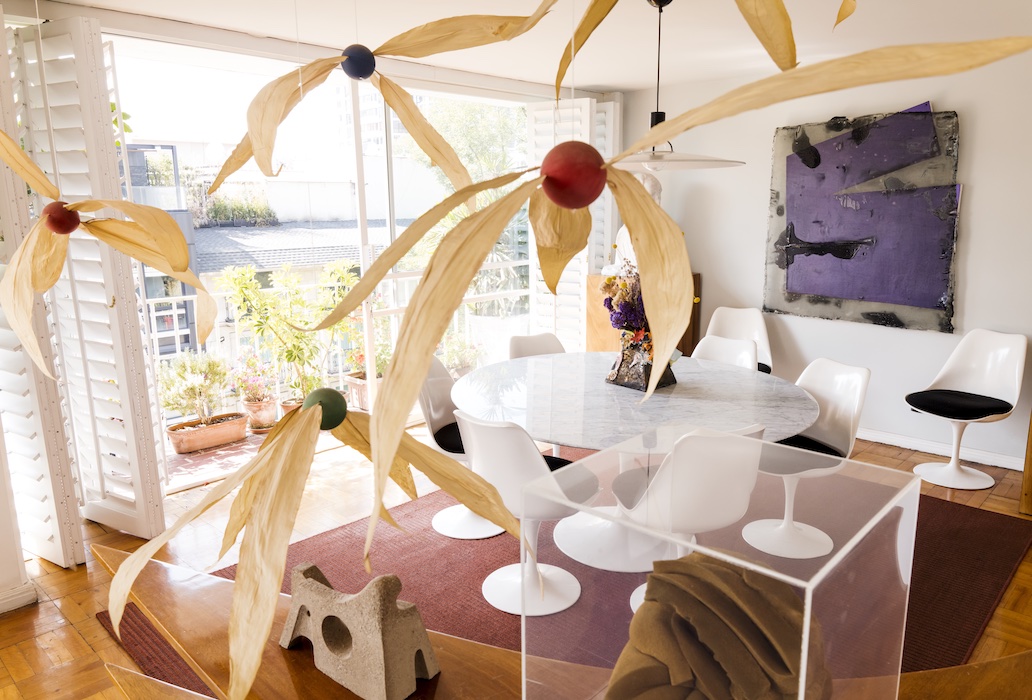
Works by Gabriel Orozco, John Chamberlain, Alex Hubbard, and Pedro Reyes; photo by Tigree, courtesy of the artists and Rodrigo Peñafiel.
WW: Was it important for you to have relationships with the artists that you collected? Is it now?
RP: At the beginning, it was. It was very appealing to see that they were my generation. They were doing things I was doing, and we were kind of on the same path toward a better planet. But two years ago, I got a piece by Louise Nevelson—who died a long time ago—from the fifties, just because I loved it.
WW: Where do you typically find the pieces of art that you buy now?
RP: If it’s a young artist, I buy them in up-and-coming galleries in Mexico. This year I bought Ana Segovia, who is this person that makes paintings around Mexican films from the forties and fifties that are very machistas—in this “man’s world.” She saw them when she was a kid and everything was black-and-white, so she translates them into these crazy colors. She criticizes through her paintings. I also bought in a gallery, Guadalajara 90210, another young artist, named Jonathan Miralda Fuksman. I saw it in an art fair in Guadalajara and love it, so I bought it this year in ZONAMACO.
And names that I see in museums that I can’t afford in galleries, I buy them in these auctions that are called “Triple D”—“divorced,” “death,” and “debt.” They’ll inherit maybe four Chamberlains, and then they see a foam sculpture and say, “What the hell is this?” And they send it to auction, and that’s where I buy it.
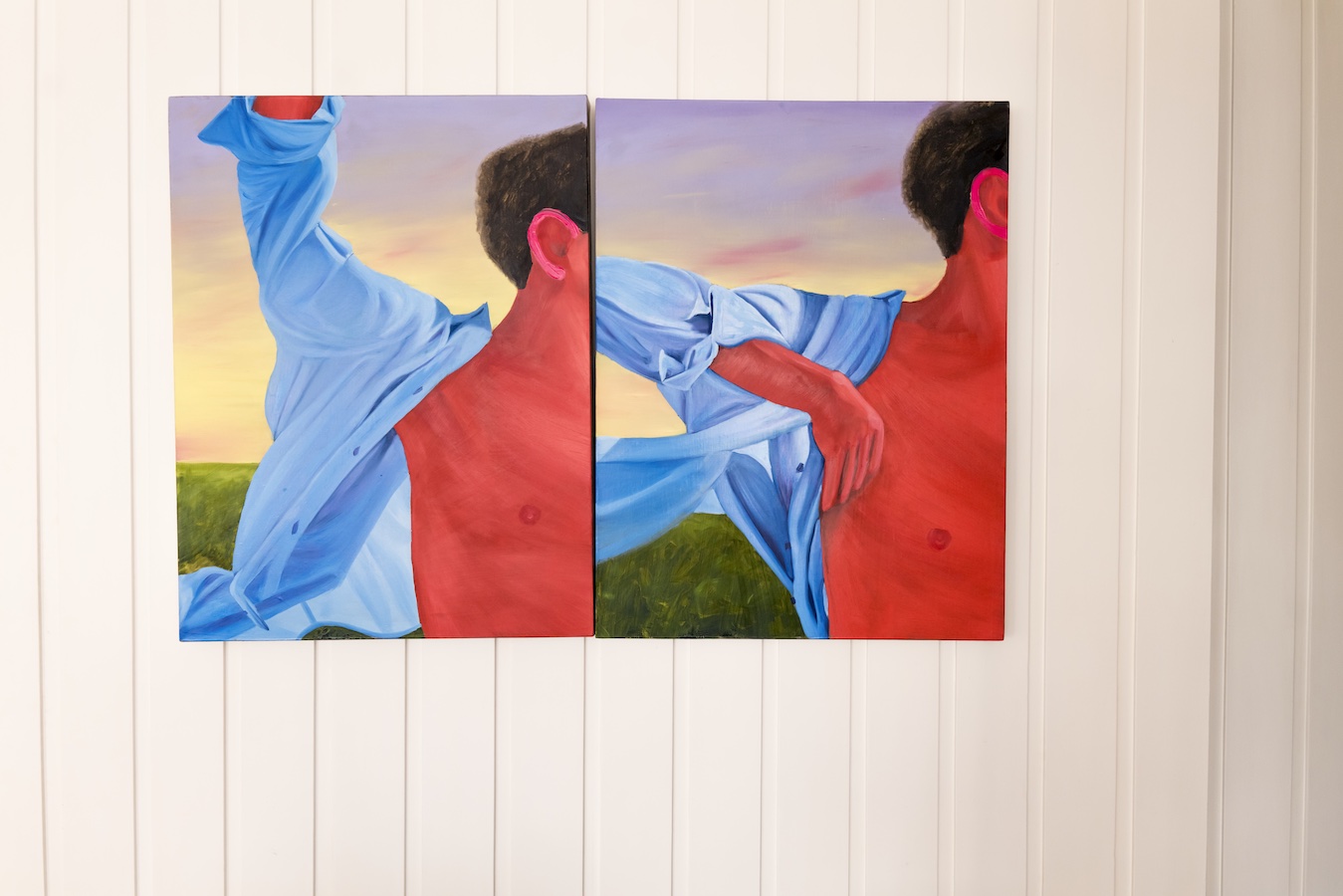
Work by Ana Segovia; photo by Tigree, courtesy of the artist and Rodrigo Peñafiel.
“We were kind of on the same path toward a better planet.”
WW: Is it important for you to collect Latin American artists, or artists of different backgrounds? In depth, or perhaps within one medium?
RP: It’s kind of all over the place. Lately, I’ve been buying a lot of pieces that have a certain thing in common, which is raw materials. I bought a Vivian Suter, which is just a canvas without the frame. I bought a piece of wood by Louise Nevelson. Then I bought a TV with a rock inside of it from Jimmie Durham. Then I bought a cardboard sculpture from Peter Fischli. Then I bought a Sterling Ruby made out of cardboard, and an Alex Hubbard made out of acrylic.
So the collection is turning into a lot of raw materials. But basically, it’s all over the place. It’s people that I like, that I see at shows or in museums, and I have in mind and would love to have a piece. But for some artists, I am just looking, looking, looking, and then suddenly, it appears, and I buy it.
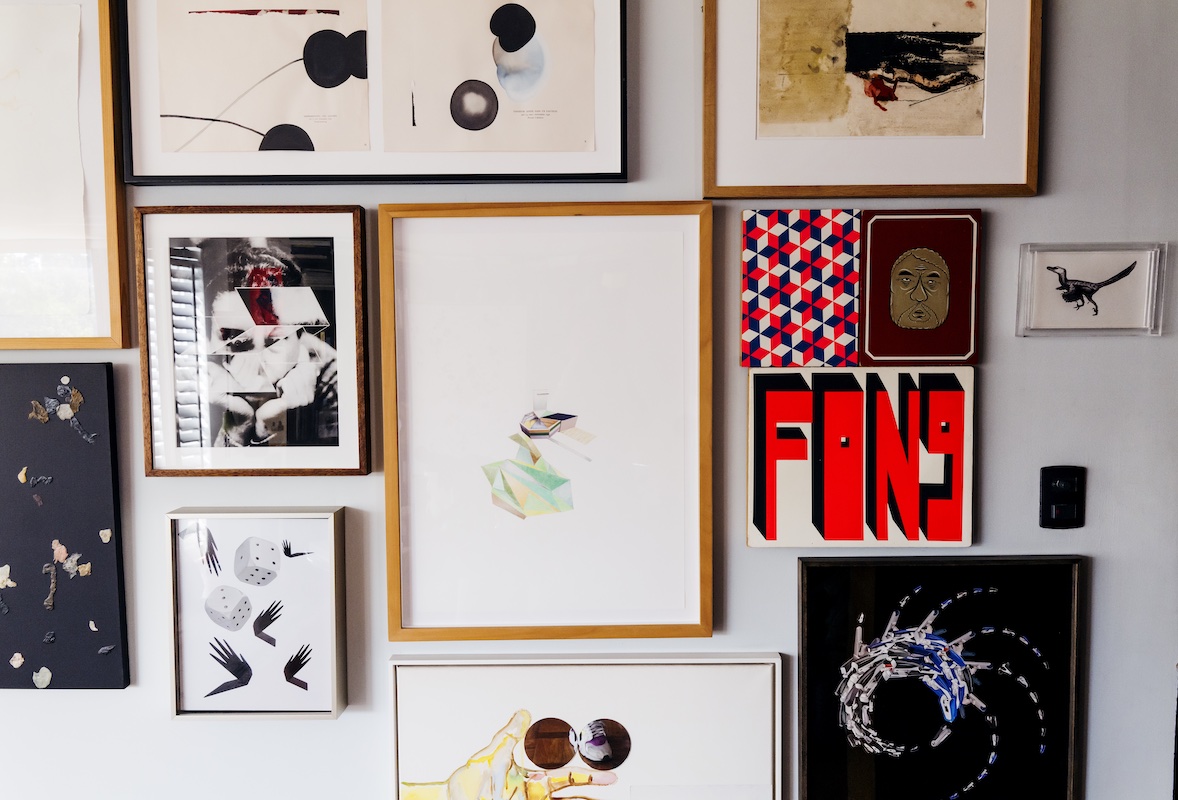
Works by Livia Corona Benjamin, Andrea Geyer, Jorge Méndez Blake, Jonathan Monk, Neo Rauch, Barry McGee, Haegue Yang, and Romeo Lopez; courtesy of the artists and Rodrigo Peñafiel.
WW: Who are you looking at right now?
RP: I have two little Pettibons, and I would love to buy more. I have a two little pictures from Wolfgang Tillmans, and I would love to buy more. From David Zwirner, I have one picture from Christopher Williams—this amazing photographer that I would love to have more of.
I have a little George Condo from the eighties, Louise Nevelson from the fifties, a Chamberlain from the fifties. I started buying early works that people overlook, and they’re amazing. It’s the start of their proper work.
WW: At home, is there a work that you like to see every day?
RP: One of my favorite pieces at home is that photo by Christopher Williams that I bought from David Zwirner. I love to see it when I come into the house. And I would say a Gabriel Orozco piece that has a big presence in the house. It’s beautiful and it has movement, so it’s fun. I also have a piece by Janett Cardiff in my bathroom that reads “There is someone behind you” that’s really fun to look at. Generally, I love all the pieces in my house. Most of them have sentimental value, either because I met the artists and had a relationship with them or because they represent a time in my life.
“I started buying early works that people overlook, and they’re amazing.”
WW: How has living with art impacted you over the years?
RP: It makes me happy. Having creativity by other people around me makes me more creative. It also makes my home unique in taste, and cozy. I found I don’t like minimalistic spaces to live. For living, I love more full, cozy spaces.
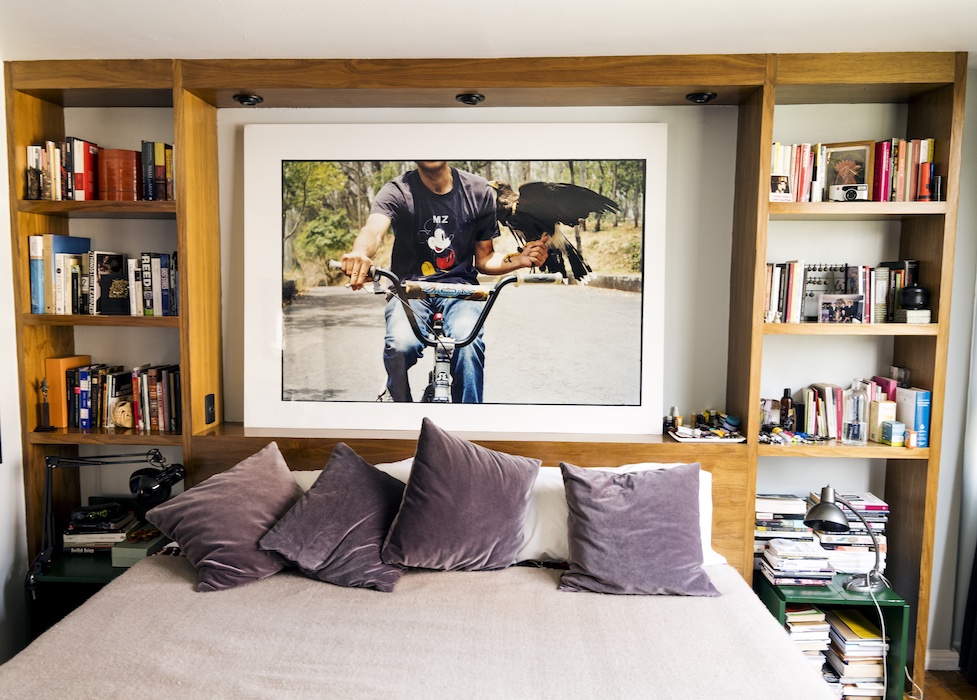
Photo by Tigree, courtesy of Rodrigo Peñafiel.
WW: Ediciones Marea is your first contemporary art project, and it provides access, working with artists. What was your initial idea when forming the company?
RP: My business partner, Rita Marimen, is a big collector of editions. She was like, “We should do an edition business because there are no editions in Mexico.” There are a lot of artists in Mexico, but people just can’t afford it. You can love Jose Dávila, but when you go to the gallery and the prices are primary market prices, you’re like, “I think that’s a bit high for my first piece.” So making editions made a lot of sense to me. When you’re trying to buy something you love and the pieces are out of your budget, this is a good way to bring good contemporary art from established artists to young and up-and-coming collectors. They can afford a piece of art that is 10 percent of the original price in a gallery, and you can have a beautiful piece in your house!
WW: What is it like to now work with artists and not just collect them?
RP: It’s incredible because you see the artist’s process and way of thinking. For example, the Miguel Calderón piece that we did was amazing because you invite them to do whatever they want, and we ask them if they would like to see it at a young collector’s home. If I was a young up-and-coming collector, and I was in my twenties, late twenties, and I could afford only one piece by you, which would be the Marea piece you would do for them? That brings their mind into different places, and the process of developing the piece is very interesting.
Miguel mentioned he loved cars because his grandfather used to be a race car driver. So, he wanted to do something like the sculptures that were in the front of the cars. There was also a photographer that he admired who took pictures of car accidents for the media. He created a silver vulture that looks like it’s on the top of a 1950s car. So we get to know more of the history and the career of the artist. We also become super close. I’ve always known Miguel, for 20 to 30 years, since he was an up-and-coming artist, but now he’s fifty-something. He’s a very well-established artist, and now we’ve become closer. We have dinner together. We go to parties together. We went to Bad Bunny together!
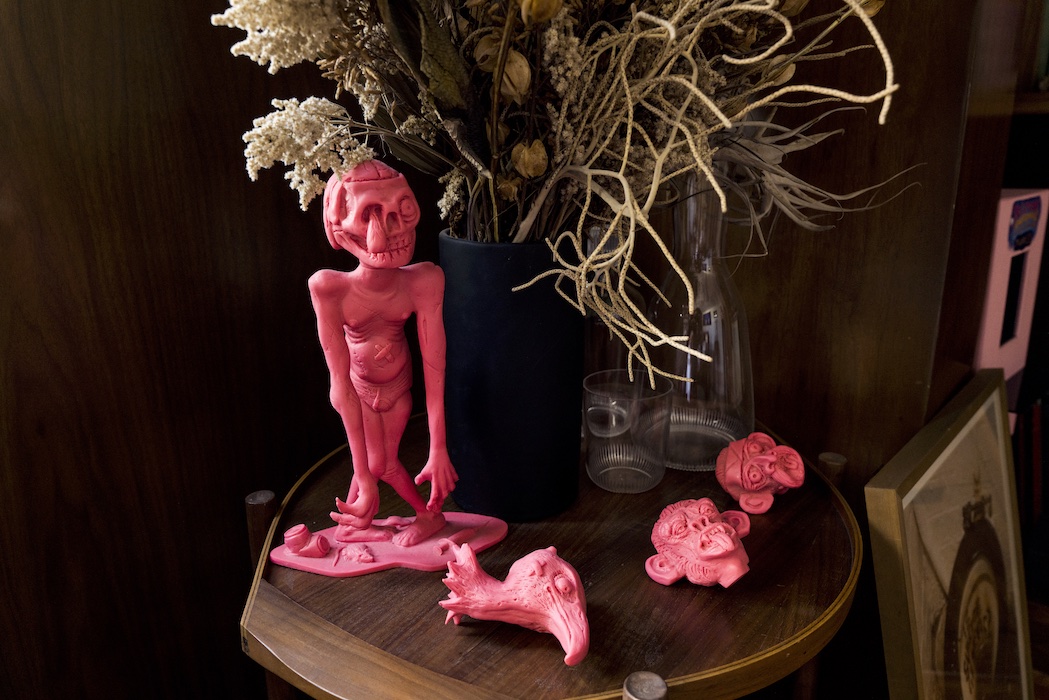
Photo by Tigree, courtesy of Rodrigo Peñafiel.
“I found I don’t like minimalistic spaces to live.”
WW: How would you describe the art scene in Mexico City today?
RP: The scene in Mexico is going through one of its best moments. The city is boiling with the energy of new and amazing local artists and galleries that are currently being complemented by incredible international artists and spaces coming here to experience and create in the city. Not only art, but design, architecture, furniture, and food are all blooming like crazy. It’s an amazing time to come and experience the city. And for us locals, it’s constant exposure to new ideas and creative forces. It’s amazing.
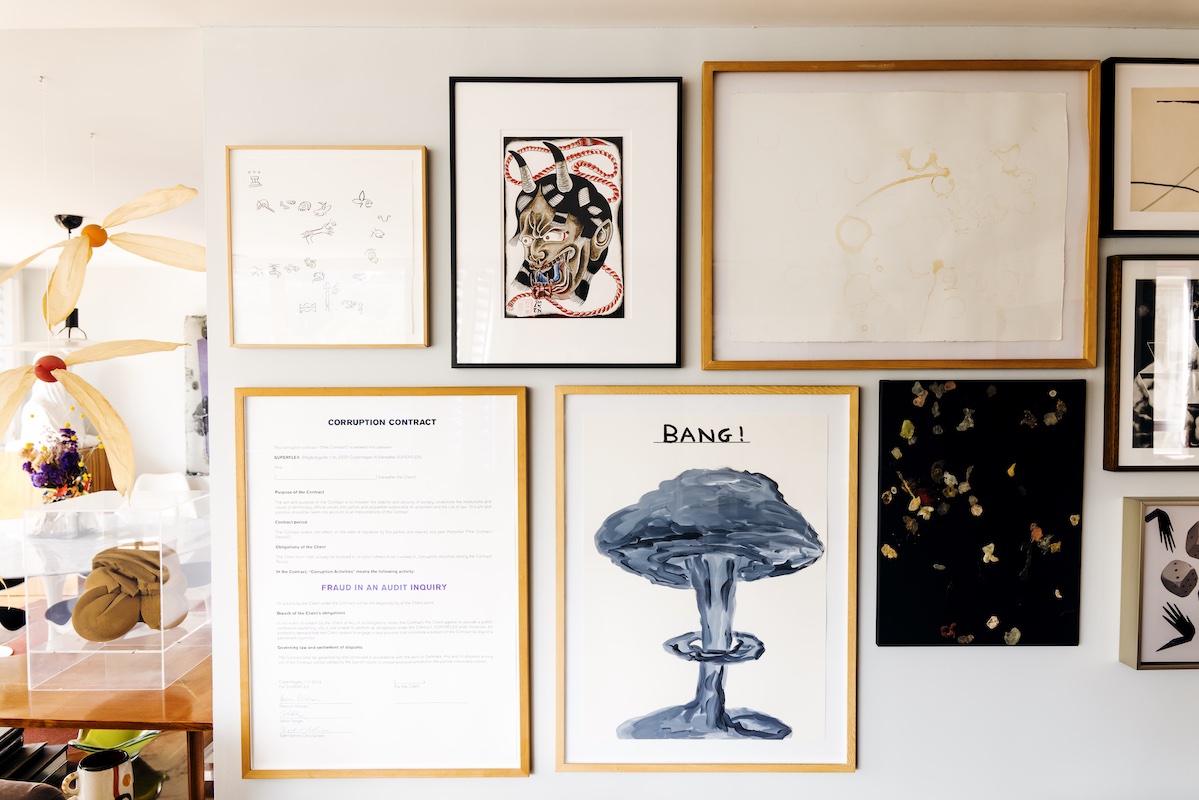
Works by Mariana Castillo de Bal, Dr. Lakra, Abraham Cruzvillegas. Adam McEwen, David Shrigley, and Superflex; photo by Tigree, courtesy of the artists and Rodrigo Peñafiel.



